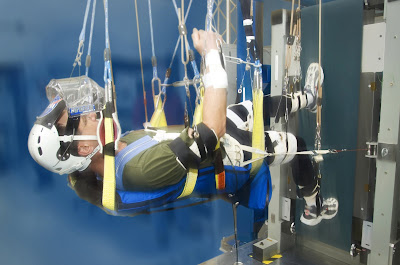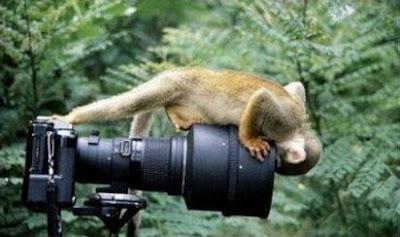
I live for this stuff. Some people love Top Ten lists... I live for trivia lists. Hang out with me for awhile through the history, there's a cheesy payoff at the end…
October 3, 1942DuringWorld War II, German Vergeltungswaffe-2 ("V2") rocket during it's fourth test launch becomes the first rocket to reach space – inadvertently.
December 17, 1947The first living organisms to travel into space, fruit flies, are launched by the USA and successfully parachuted back to the planet surface in good health.
October 4, 1957The first vehicle designed specifically for space by the USSR,
Sputnik 1, launches on an R-7 rocket and achieves orbit, becoming the first artificial satellite.
 April 12, 1961
April 12, 1961The first human being to travel into space and orbit planet Earth is Soviet Senior Lieutenant
Yuri Gagarin, aboard Vostok 1.
April 6, 1965The first commercial (non-government) satellite,
Intelsat I, is launched by United Launch Alliance's Delta D rocket for the Communications Satellite Corporation (COMSAT), to demonstrate that communications via synchronous-orbit satellite are feasible.
Talk about creating a monster!June 19, 1973The first civilian in space is also the first woman in space, Soviet citizen
Valentina Tereshkova, aboard Vostok 6.
December 6, 1965During overlapping missions of Project Gemini, four US astronauts complete the first space "rendezvous" of two crafts.
Gemini 6A and 7 flown by Wally Schirra, Tom Stafford, Frank Borman and Jim Lovell.
December 24, 1968The first human beings to break Low Earth Orbit (LEO) and achieve Lunar Orbit of the Moon, Earth's only natural satellite, are astronauts Frank Borman, Jim Lovell and Bill Anders of
Apollo 8.
July 20, 1969During the
Apollo 11 mission, US astronauts Neil Armstrong and Buzz Aldrin are the first two humans to land and work on the surface of Earth's moon.
 June 29, 1971
June 29, 1971Russian cosmonauts Georgi Dobrovolski, Viktor Patsayev, and Vladislav Volkov populate the very first orbiting space station,
Salyut 1, built by the Soviet Union. Sadly, these same three men become the first and only "in-space" human fatalities when a pressure-equalization valve opens in their Soyuz 11 craft.
July 15, 1975The first joint space project between two nations, the USA and USSR, is the
Apollo-Soyuz Test Project (ASTP), where three American astronauts and two Russian cosmonauts eased the tensions of the Space Race in a shared flight, also known colloquially in each country as "Apollo 18" and "Soyuz 19".
April 12, 1981Columbia STS-1 is the maiden
voyage of the Space Shuttle or Space Transportation System, the first "re-useable" craft to achieve orbit and also return to Earth's atmosphere, being part rocket and part space plane.
December 8, 2010SpaceX's Falcon 9 rocket launches the
Dragon into orbit and later recovers the capsule from the ocean, becoming the first commercial (non-government) entity to fly and retrieve a private-sector-built spacecraft... carrying a huge wheel of cheese.
That's right, it's cargo was a hunk of Le Brouere, an homage to an infamous Monty Python sketch where John Cleese shoots the proprietor of a cheese shop that quite humorously sells no cheese! As
Escapist Magazine noted,
"The gesture retroactively makes the sketch somehow funnier, in that now even commercial spacecraft has cheese, but the cheese shop still has none."
If you are unfamiliar with this comedy sketch, like maybe you lived in a cave throughout the 1970s or hadn't happened to be born yet, there is a
delightful live version on YouTube, where Cleese and Michael Palin almost crack up just toward the climax of the joke.
The
original sketch from
Monty Python's Flying Circus is also on YouTube, not quite courtesy of BBC One.
Pretty sure that's a first. Gouda one, Elon! ;)
































 April 12, 1961
April 12, 1961

